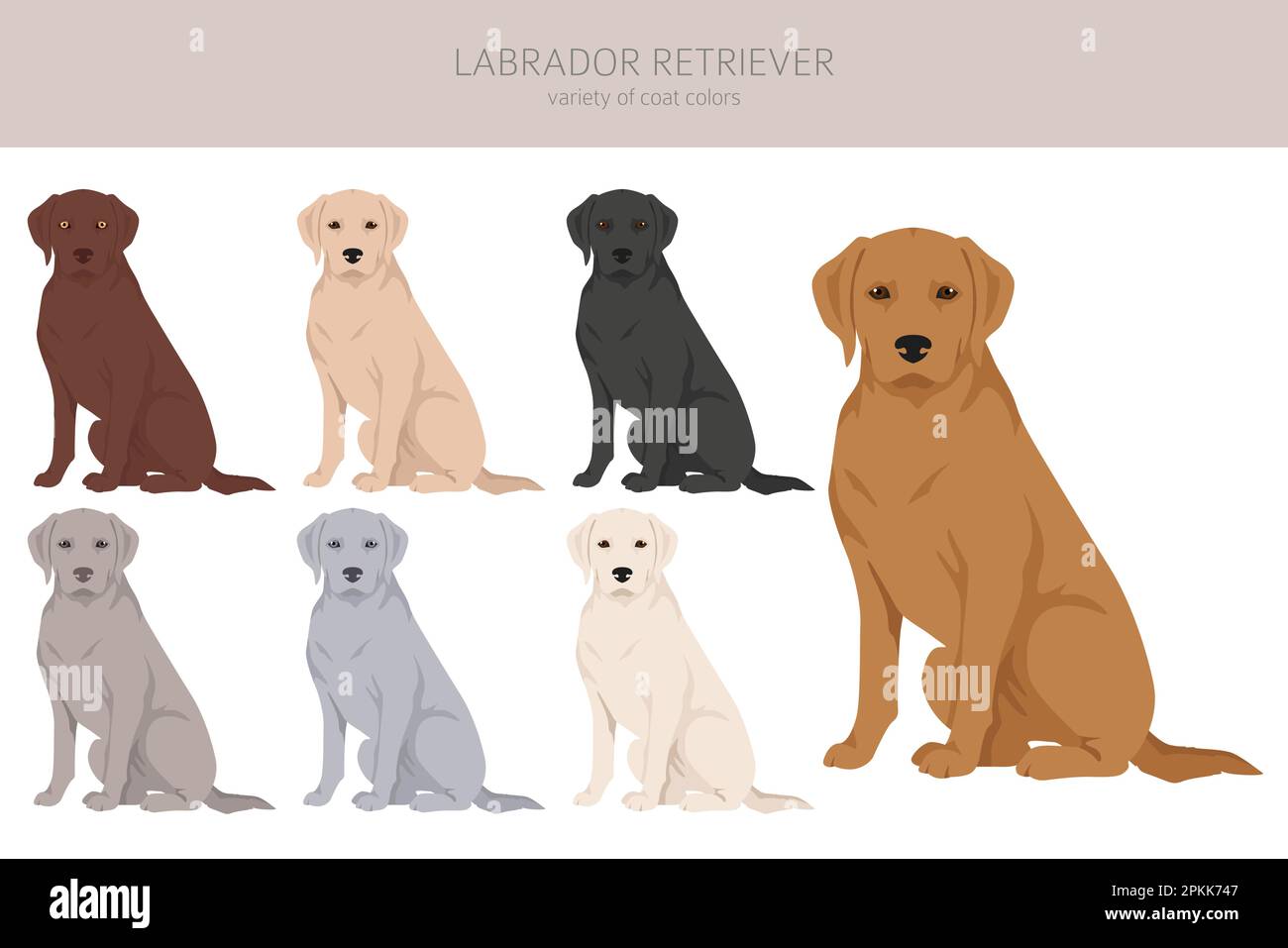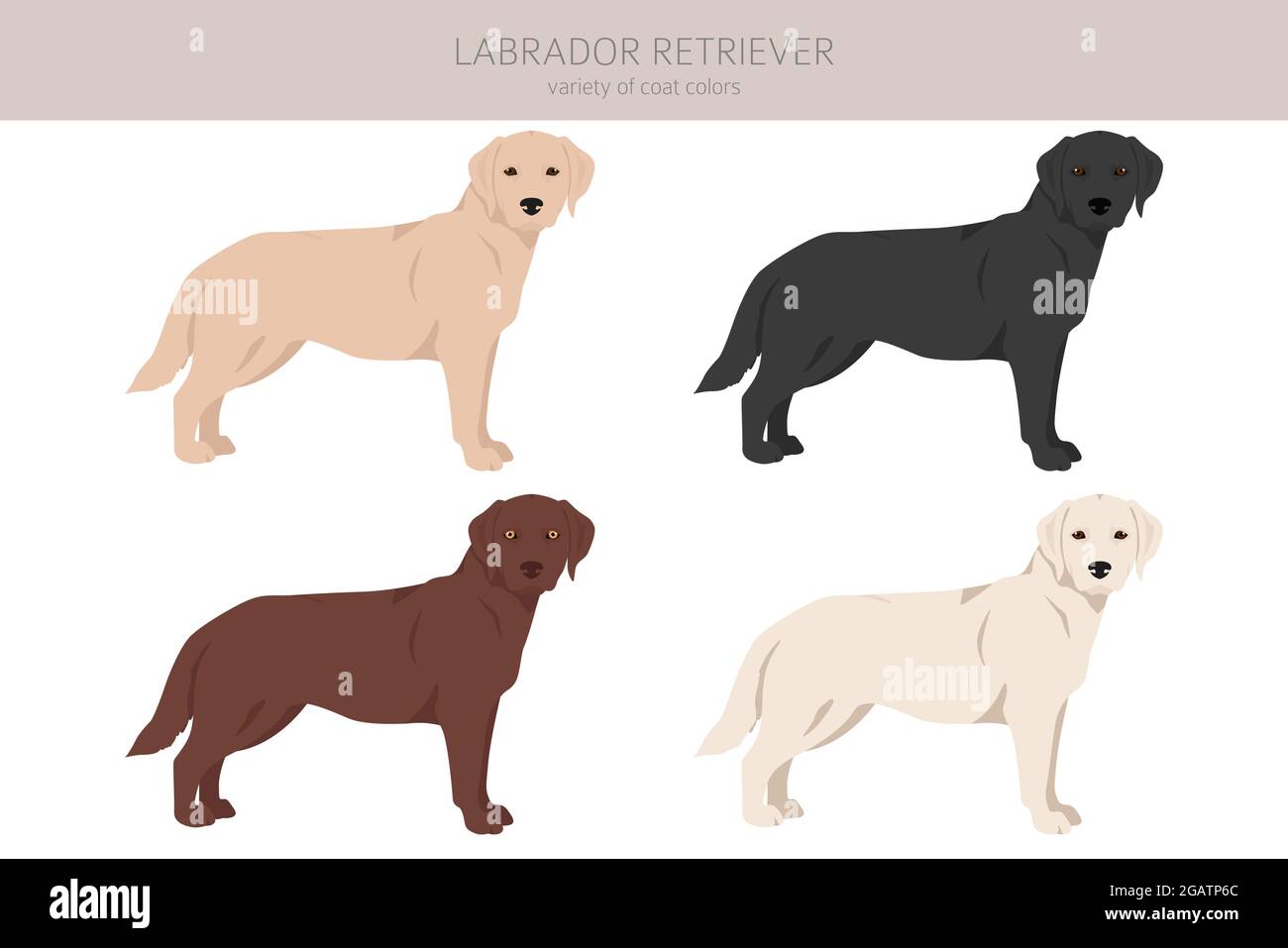Labrador Retriever coat color is determined by genetics, specifically two primary genes: the B and E genes. These genes dictate whether a Labrador will have black, yellow, or chocolate fur.
Labrador Retrievers are among the most popular dog breeds, known for their friendly nature and intelligence. Their coat color varies widely, captivating dog lovers everywhere. While many people adore the iconic black and yellow Labs, chocolate Labs have gained significant popularity.
Understanding the genetic factors behind their coat colors provides insight into breeding practices and can help prospective owners choose their ideal furry companion. Each color has its unique charm, making every Labrador a special addition to any family. This rich variety in appearance enhances their appeal as loyal pets and working dogs.

Credit: www.alamy.com
Genetics Behind The Color
The coat color of Labrador Retrievers is fascinating. It stems from genetics. Understanding these genes helps explain why Labs come in different colors. The two main genes are the B and E loci. Other genes also play a role in determining coat color.
The B And E Loci
The B locus controls the dark pigment in a Lab’s coat. It has two alleles:
- B – This allele produces black pigment.
- b – This allele leads to brown pigment.
A dog with at least one B allele will have a black coat. A dog with two b alleles will have a brown coat. The B locus is dominant over the brown allele.
The E locus affects the expression of the color. It has two alleles:
- E – This allele allows pigmentation.
- e – This allele prevents pigmentation.
A dog with at least one E allele can show black or brown. A dog with two e alleles will have a yellow coat. The E allele is dominant.
Other Influential Genes
Several other genes influence coat color in Labrador Retrievers. These include:
- Agouti gene: Controls the distribution of black and brown.
- Extension gene: Works with the E locus to determine yellow shades.
- Ticking gene: Can cause spots or flecks in the coat.
These genes interact in complex ways. The combinations of alleles create the beautiful variety of coat colors. Understanding this helps breeders and owners appreciate their Labs even more.
Common Labrador Retriever Colors
Labrador Retrievers are famous for their friendly nature and striking looks. They come in three main colors: black, chocolate, and yellow. Each color has its unique traits and appeal. Understanding these colors helps potential owners choose the right pup.
Black Labs: A Dominant Trait
Black Labs are the most common color. They have a rich, shiny coat that stands out. The black coat color is a dominant trait. This means that if one parent is black, the puppies are likely to be black too.
- Black Labs are known for their friendly demeanor.
- They are often used as service dogs.
- Black fur helps them absorb heat in cold weather.
Chocolate And Yellow Labs
Chocolate and yellow Labs are equally charming. Their colors vary from light cream to deep chocolate. Both colors are influenced by recessive genes. This means both parents must carry the trait for puppies to be born in these colors.
| Color | Description |
|---|---|
| Chocolate | Rich brown color, varying shades. |
| Yellow | Ranges from light cream to dark gold. |
Both chocolate and yellow Labs have their own special appeal. Here are some unique traits:
- Chocolate Labs: Known for their playful and loving nature.
- Yellow Labs: Often have a more energetic personality.
Rare And Unique Coat Colors
Labrador Retrievers are known for their friendly nature. Their coat colors can also be quite unique. Some colors are rare and often spark debate among enthusiasts. Let’s explore these rare coat colors that stand out in the Labrador community.
Silver Labs: A Controversial Color
Silver Labs are one of the most talked-about colors. They have a striking silver-gray coat. This color comes from a specific gene variant. Many dog lovers question its legitimacy.
- Some breeders argue it is not a true Labrador color.
- Others believe it results from a dilution gene.
- Silver Labs may face health issues like hip dysplasia.
Despite the controversy, Silver Labs have gained popularity. They are often seen as unique and beautiful. The debate continues among breeders and enthusiasts.
Charcoal And Champagne Labs
Charcoal Labs are another rare color. They appear darker than Silver Labs. Their coat can range from deep gray to almost black. This color also comes from the dilution gene.
Champagne Labs are lighter than traditional yellows. Their coats can be soft beige or cream. This unique color is captivating and charming.
| Color | Description | Gene Source |
|---|---|---|
| Silver | Silver-gray coat | Dilution gene variant |
| Charcoal | Dark gray to black coat | Dilution gene variant |
| Champagne | Soft beige or cream coat | Modified yellow gene |
These rare colors add variety to the Labrador breed. Each color brings its own charm and appeal.

Credit: www.facebook.com
Impact Of Coat Color On Health
The coat color of a Labrador Retriever can influence its health. Some colors are linked to specific health issues. Understanding these connections helps owners provide better care.
Color Dilution Alopecia
Color dilution alopecia is a genetic condition affecting some Labradors. It primarily impacts dogs with diluted colors like silver and charcoal. This condition leads to hair loss and skin problems.
Here are some key points about color dilution alopecia:
- Hair becomes thin or falls out.
- Skin may appear red or inflamed.
- Dogs may suffer from itching or discomfort.
Regular veterinary check-ups are essential for early detection. Treatment can help manage symptoms and improve quality of life.
Does Color Affect Temperament?
Many owners wonder if coat color influences a dog’s behavior. Research shows that coat color does not determine temperament. All Labradors, regardless of color, can be friendly and loving.
Factors that affect temperament include:
- Genetics.
- Socialization.
- Training.
Colors like yellow, black, and chocolate have similar temperaments. Focus on training and socialization for a well-behaved dog.
Choosing A Labrador Retriever
Choosing a Labrador Retriever is an exciting journey. Many factors play a role in your decision. Coat color is just one aspect to consider. Focus on health and temperament first. This ensures a happy and healthy companion.
Considerations Beyond Color
Coat color is not the only important factor. Here are some key points to think about:
- Health: Look for reputable breeders. They test for genetic issues.
- Temperament: Labs are friendly and loyal. Choose a puppy with a calm nature.
- Activity Level: Labs require regular exercise. Ensure you can meet their needs.
- Size: Full-grown Labs can weigh between 55 to 80 pounds. Consider your living space.
Health And Temperament First
Health and temperament should be top priorities. A healthy Labrador lives longer. A good temperament makes training easier.
Here are some health issues to watch for:
| Health Issue | Symptoms |
|---|---|
| Dysplasia | Pain in hips or elbows |
| Obesity | Excess weight, lack of energy |
| Ear Infections | Scratching ears, odor |
Temperament traits to consider:
- Friendly: Labs are known for their friendly nature.
- Intelligent: They learn commands quickly.
- Playful: Labs love to play and have fun.
Choose a Labrador that fits your lifestyle. Prioritize health and temperament over coat color.

Credit: www.alamy.com
Conclusion
Understanding what determines Labrador Retriever coat color enriches your appreciation for this beloved breed. Genetic factors play a crucial role in color variation. By recognizing these influences, you can better understand your Labrador’s unique traits. Embrace the beauty of all coat colors, as each one tells a story of its own.
